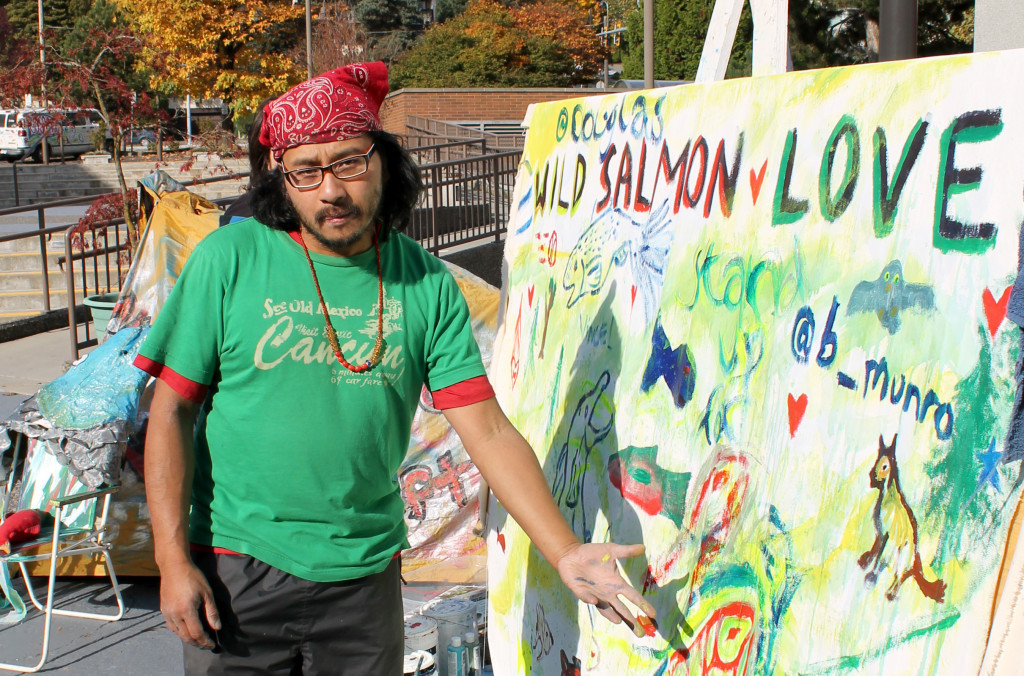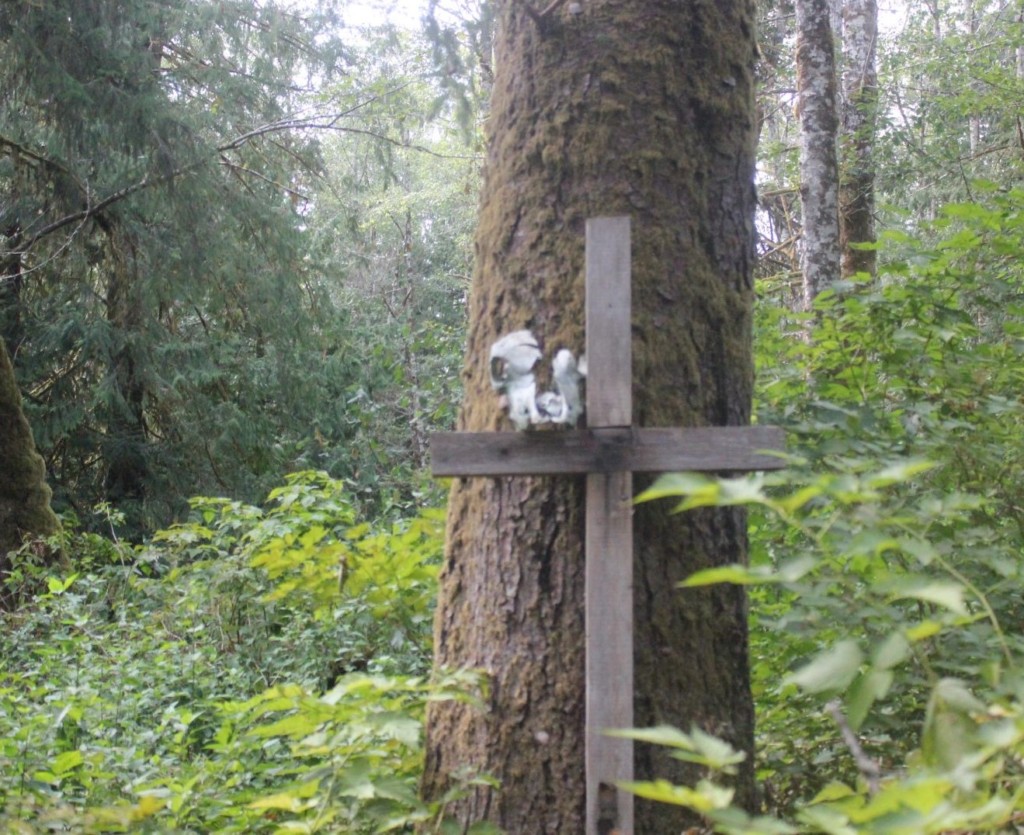Salmon Day educates on importance of salmon, ecologically and economically
By Sophie Isbister, Staff Writer
Salmon Day, which took place on campus in New Westminster at Douglas College last Thursday, was a day of events and presentations designed to bring awareness to the importance of salmon to our culture, ecology, and economy.
The event took place in four different locations campus-wide: the Aboriginal Gathering Place, the Douglas Students’ Union (DSU) building, outside on the fourth floor, and in the concourse. Student organizer Ashley-Anne Churchill said the event was spread out among the campus for a reason.
“I’d see events here and they’d be in one little corner of the college,” Churchill told The Other Press. “I wanted something [where] it didn’t matter which floor you went onto, you would find something and then it would draw you to all the other different places.”
The concourse was host to four information booths: the Fraser River Discovery Centre (which educates about the Fraser River), The Wilderness Committee (a non-profit wildlife conservation organization), Pipe-Up Network (which opposes pipelines and tankers), and Salmon Are Sacred (an activist group that rallies against salmon farms).
Protecting salmon is the key to myriad ecological problems facing British Columbia: “If we just protected salmon and their habitats, we’d be fighting against the [Alberta] tar sands and the pipelines […] and the deforestation. All those things affect salmon,” she says. Salmon are a keystone species, she told us, which means that the entire ecosystem relies on salmon.
In addition to short films playing throughout the day at the Aboriginal Gathering Place, there were also two presentations on the importance of wild salmon, one by Dawn Morrison in the morning and Harjap Grewal in the afternoon.
During the busy campus lunch time there was a performance in the concourse by Mike Dangeli of the Git Hayetsk Dancers. Dangeli sang several songs to a growing and attentive crowd and played a traditional handmade drum. He was later joined by two other members of his dance group, and all three of them together performed a rowing dance and a raven dance, among others.
On the fourth floor, live art was taking place outside of the campus. Jay Peachy, salmon warrior, street artist, and activist had a giant canvas and several paints laid out for any student to come by and use. By mid-afternoon the canvas was brightly coloured with water, trees, people’s names, and of course, lots of salmon. Peachy sees street art as an effective way to make his mark on the world through activism: “I see fish as medicine, and I see art and all the things I do as a form of healing […] we need that power of healing in today’s world.”
Churchill stresses this importance of salmon in our ecosystem: “People [in the Lower Mainland] don’t realize that what happens in the interior does affect them. […] If they put the pipelines up in the North, then if there’s even one tiny little leak it’ll contaminate everything downstream. And we’re all downstream here,” she says, also adding that salmon are a keystone species. “They hold an ecosystem together. Everybody relies on salmon.”
Image of Jay Peachy from Sophie Isbister.


